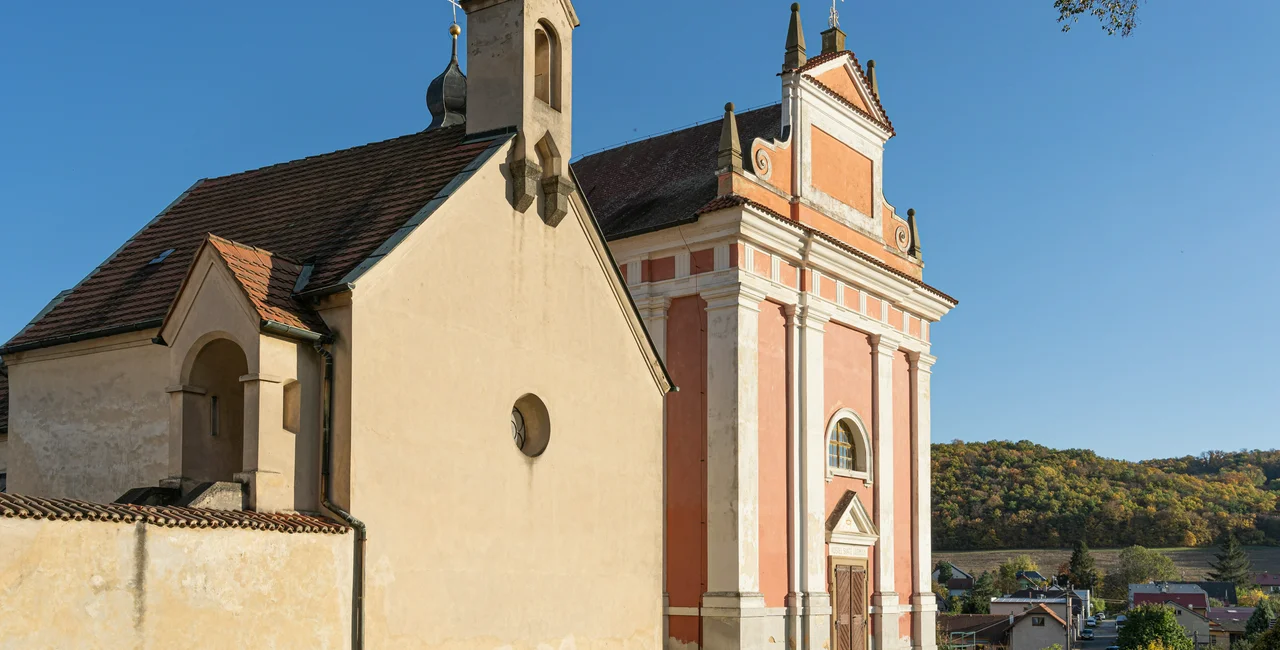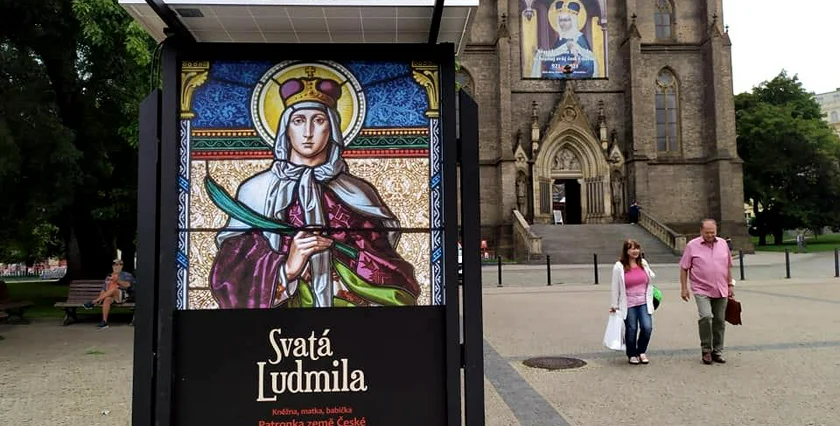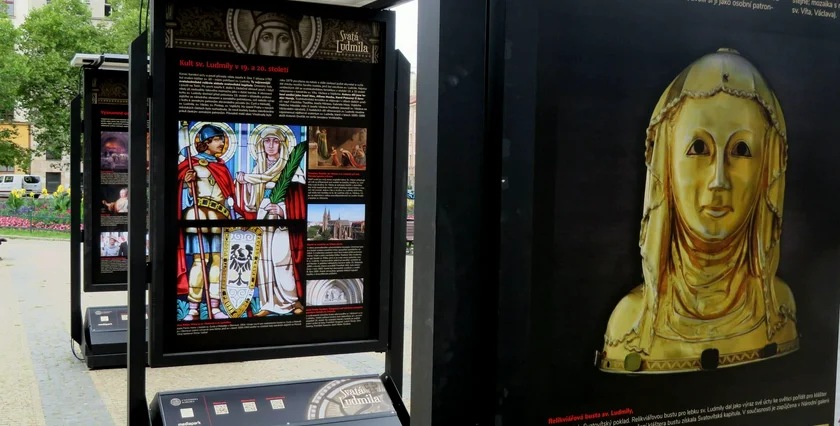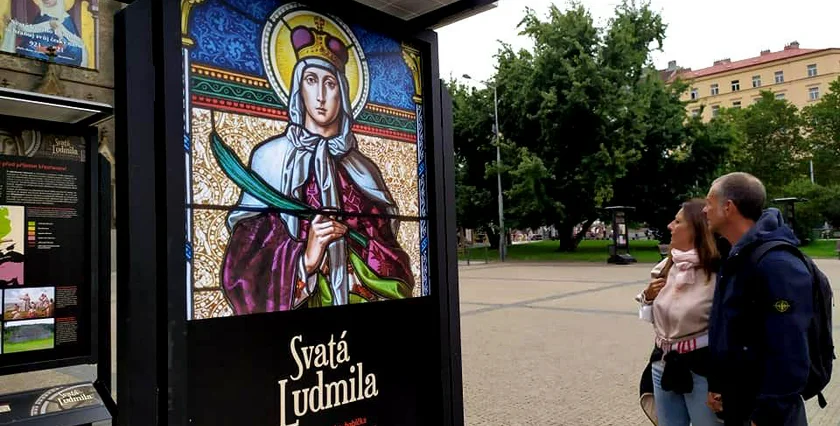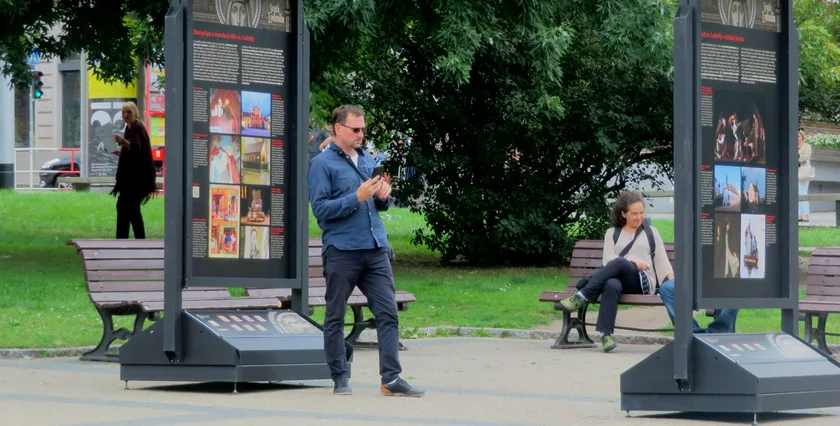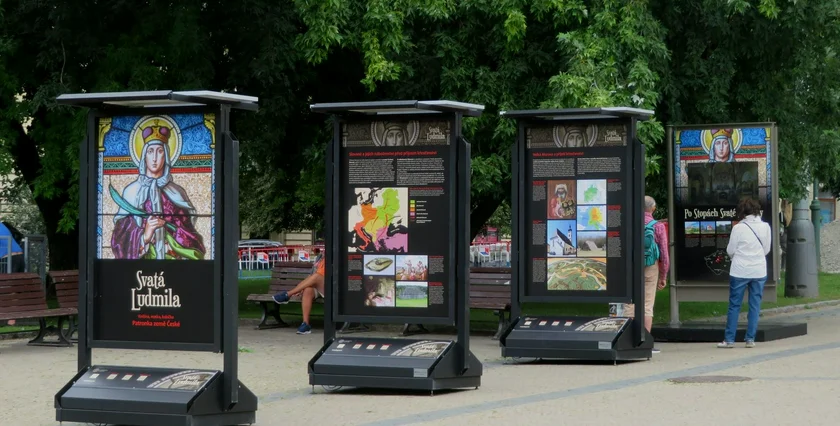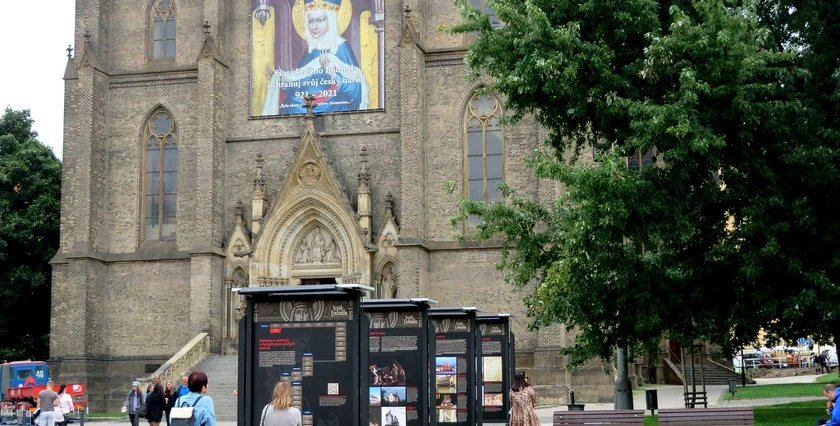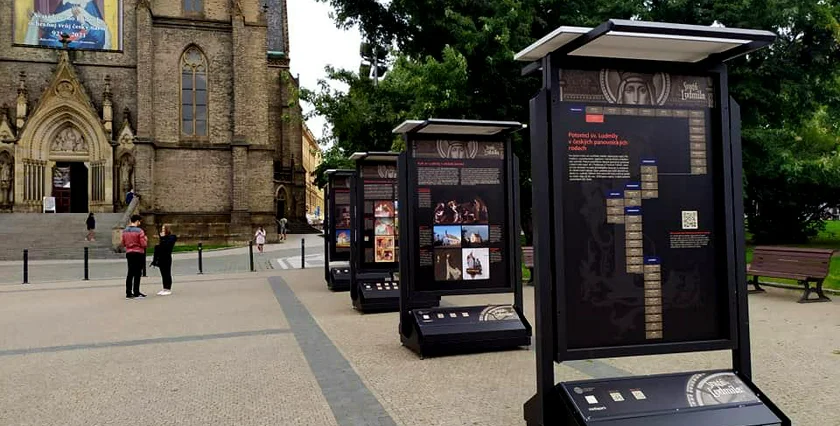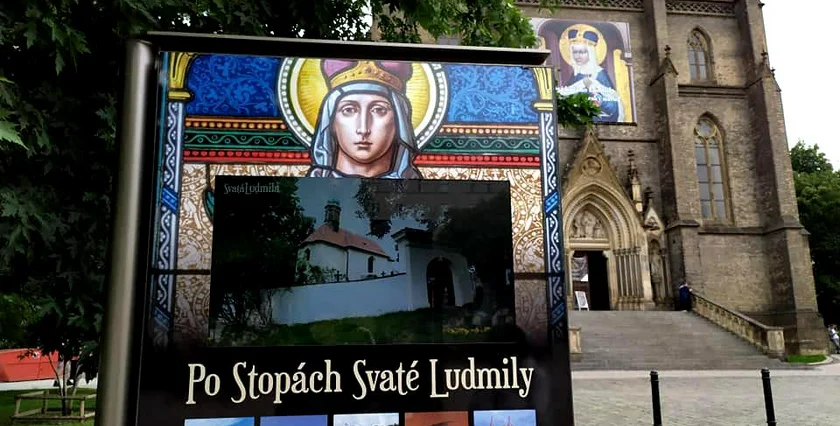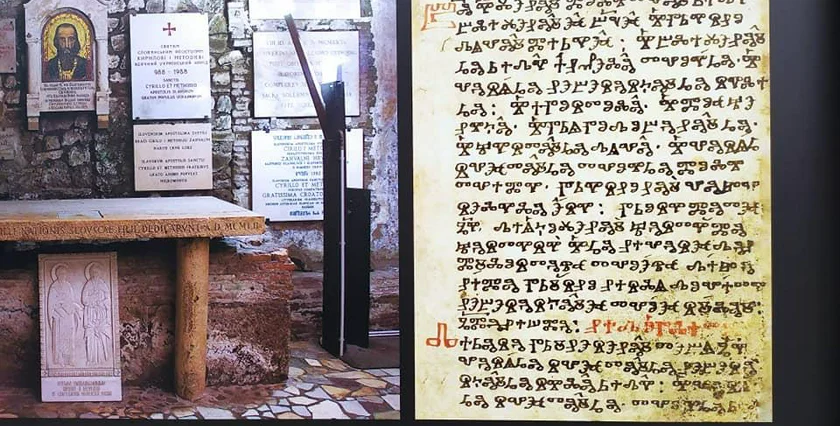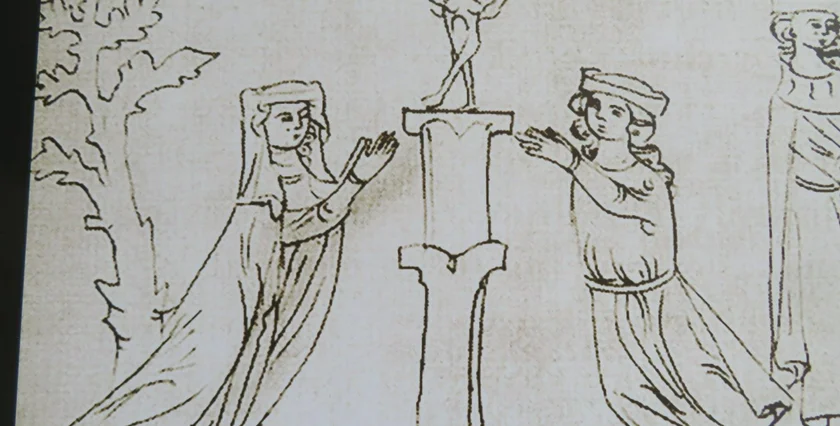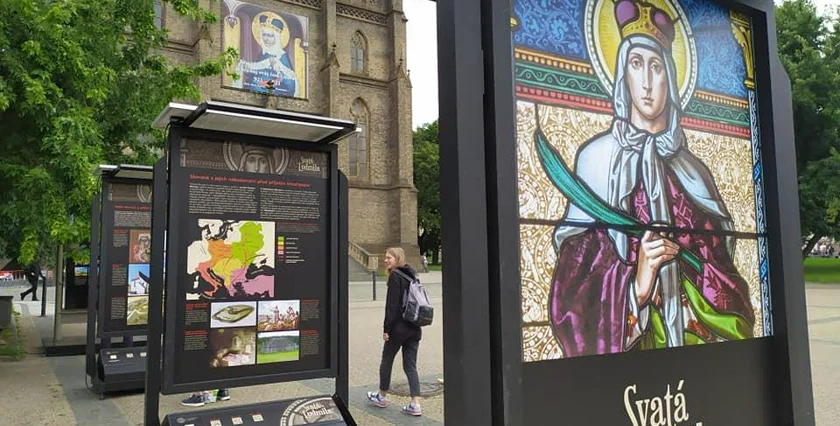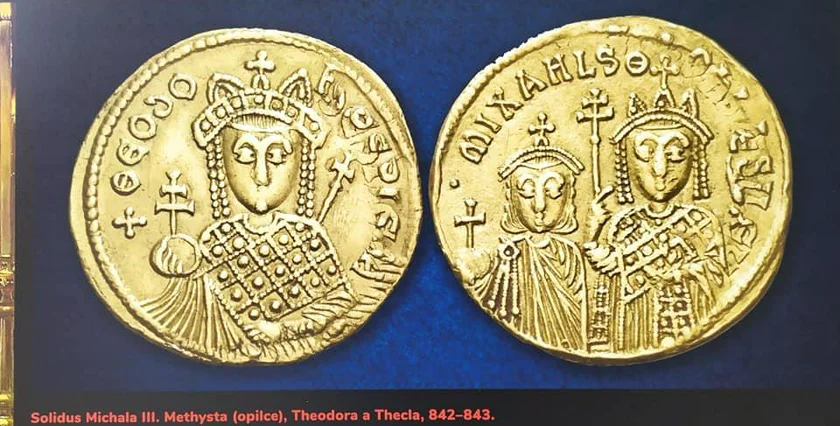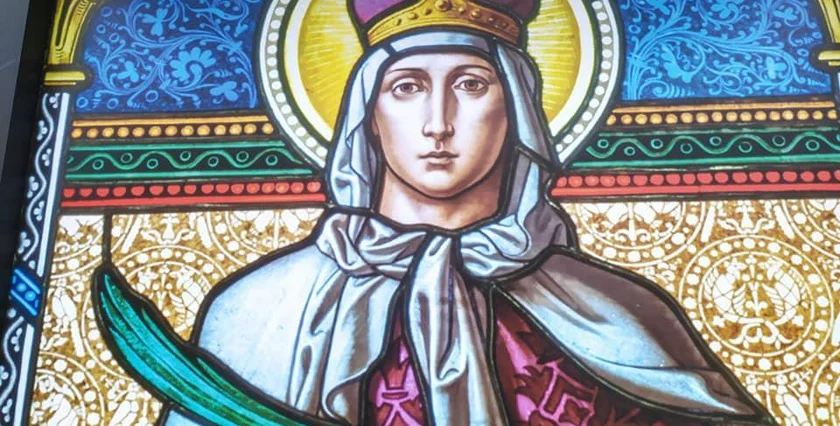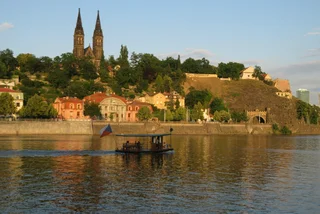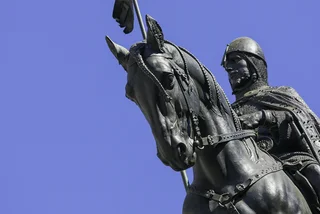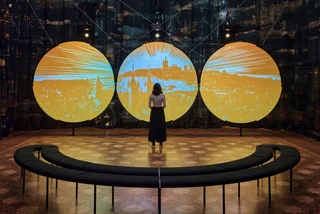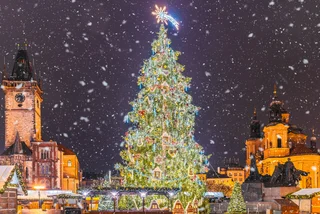This year marks 1,100 years since the murder of St. Ludmila on Sept. 15, 921. The first historically documented Czech princess, Ludmila was the wife of Bořivoj I, a prince in the Přemyslid dynasty who converted to Christianity during a time when there was a strong movement to preserve paganism.
Ludmila is perhaps best-known for raising her grandson Václav, known in English as Wenceslas, who later became the patron saint of the Czech lands. After being murdered at the order of her daughter-in-law Drahomíra, Ludmila was canonized in the 12th century.
From multiple exhibits to a nine-stage pilgrimage, a number of events will commemorate the life of a saint revered for her piety.
Perhaps the most active tribute is the pilgrimage taking place from Sept. 2 to Sept. 13 that invites people to hike from Mělník, where Ludmila was born sometime around 860 AD, to Tetín, where she was allegedly strangled with a scarf. An average of 15 kilometers will be covered per day, so the pace should not be too intense. The walks on Sept. 7, 10, and 11 will take place at least partly in Prague.

The series of hikes pass through a number of scenic landmarks; the pilgrimage site at Tetín is home to the early Baroque-style Church of St. Ludmila as well as a 13th-century castle ruin with panoramic views of the Berounka Valley from the Tetín rocks.
It's free to join the pilgrimage, but participants must pay for their own transportation to the starting points and back from the endpoints, as well as for food, admission fees, and other incidental expenses. Discussions and special masses will be primarily in Czech, but the organizers say English speakers are welcome. More details are here.
An outdoor exhibition about the life and influence of St. Ludmila has just opened in front of the Church of St. Ludmila in náměstí Míru in Prague’s Vinohrady district.
"St. Ludmila, Princess, Mother, Grandmother, Patron of the Czech Lands" features eight stands with 16 display panels with pictures of stained glass windows, a reliquary, a mosaic, a gold coin, and manuscripts, as well as some modern photos of people and places. One stand also has a video screen playing a documentary. Texts on the panels and narration on the video are in Czech.
Visitors can access more videos by scanning the QR codes on the panels. This display run till Sept. 15.
The panels bring together images from across the country. The original of the gilded reliquary depicted on one panel is at the St. George Basilica at Prague Castle. But if you want to see the stained glass window with Ludmila and her grandson St. Wenceslas, for example, a road trip to a church in Olomouc is required.
Another display about the life of St. Ludmila can be seen in the Wallenstein Palace in Prague’s Malá Strana district. The palace is the home of the Czech Senate, and some hallways and the garden are open to the public. The Senate will also host a conference on this saint in mid-September.
Panels in Wallenstein Palace’s Mythological Corridor and the adjacent Wallenstein Garden offer information on the arrival of Christianity in the Czech lands, and the circumstances under the Přemyslid rulers in the ninth and 10th centuries. This exhibition runs through mid-October.
There is also an exhibition on St. Ludmila in music at the Czech Museum of Music, a branch of the National Museum, in Malá Strana until Oct. 4. It tracks her influence on composers up to Antonín Dvořák, who wrote an oratorio in her honor.
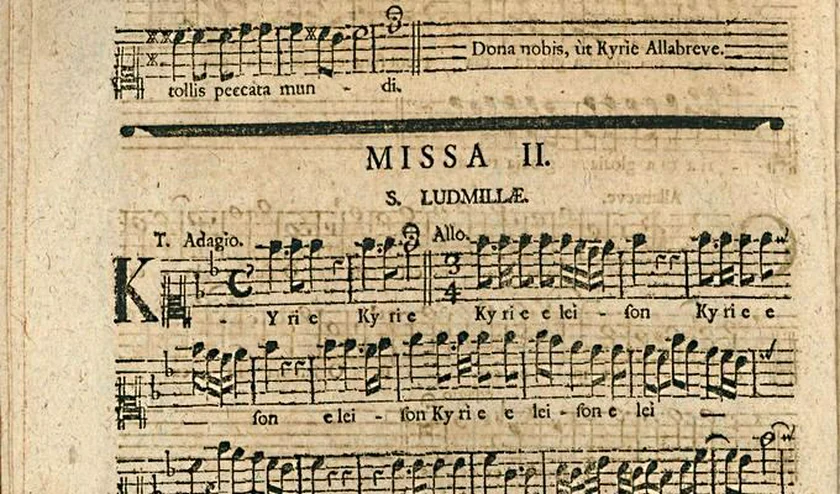
It is hard to separate fact from legend, but after Ludmila’s son Vratislav died, a dispute emerged between Ludmila and Vratislav’s widow Drahomíra over how to raise the young prince Václav. He later became the St. Wenceslas depicted on the statue in Wenceslas Square.
He was Ludmila’s grandson and Drahomíra’s son. Some sources claim Drahomíra favored a return to paganism, while Ludmila wanted Václav raised as a Christian. Other sources simply see the struggle as a routine power play over control of the throne until Václav was old enough to rule on his own.
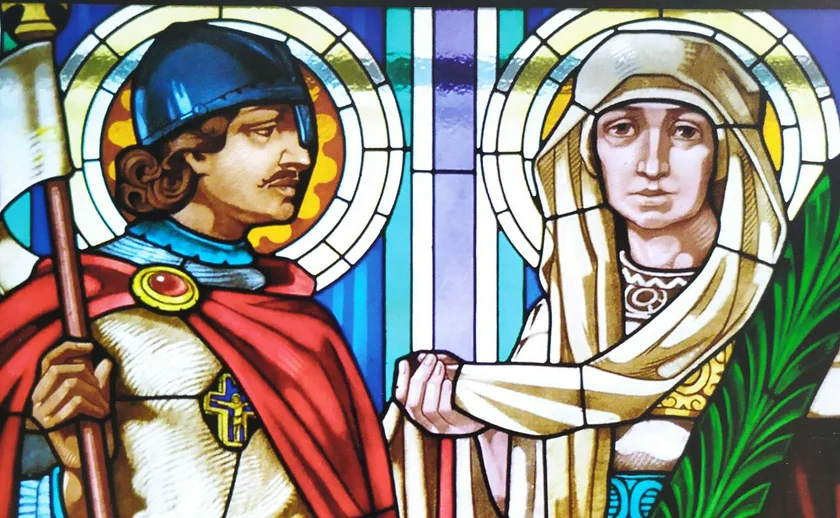
Drahomíra is alleged to have hired killers to strangle Ludmila to death. Since she died in a struggle over the preservation of Christianity, she is considered a martyr by the Catholic Church.
Prince Václav had her remains placed in the St. George Basilica at Prague Castle, where they still are.
Drahomíra is also said to have also had a hand in the murder of her son Václav, who was killed in 935 AD by his brother Boleslav the Cruel. Drahomíra’s later years are clouded in mystery.
More details on the exhibitions and other events (in English) are available on the Svatá Ludmila 1100 let website.












 Reading time: 4 minutes
Reading time: 4 minutes 